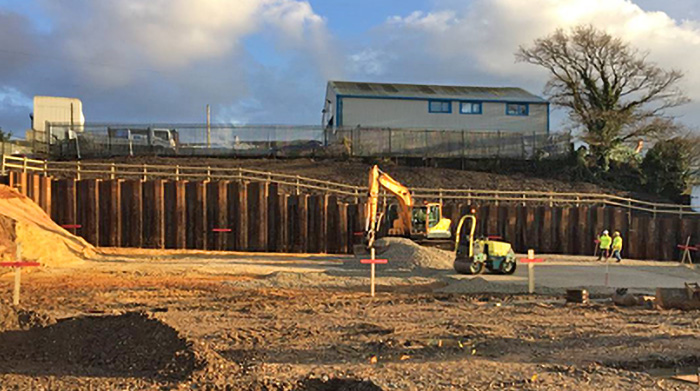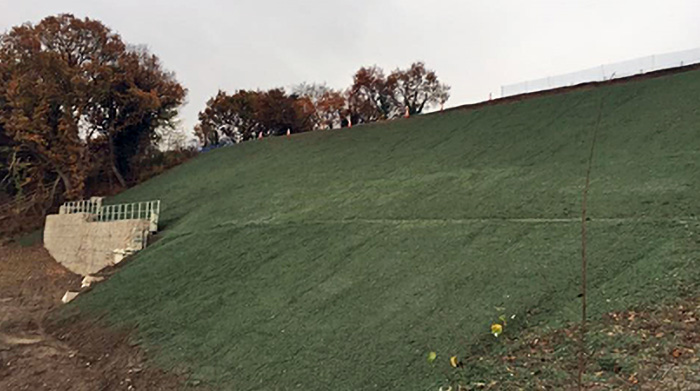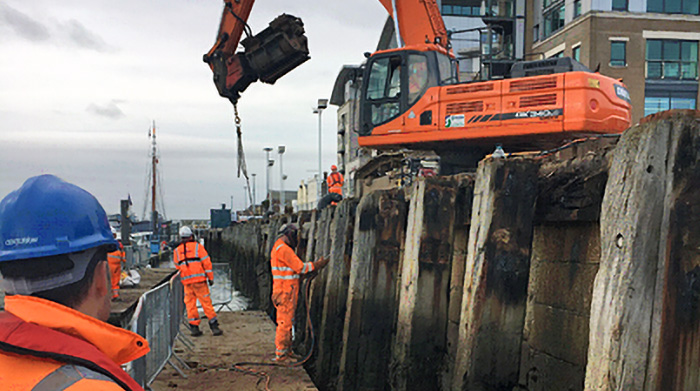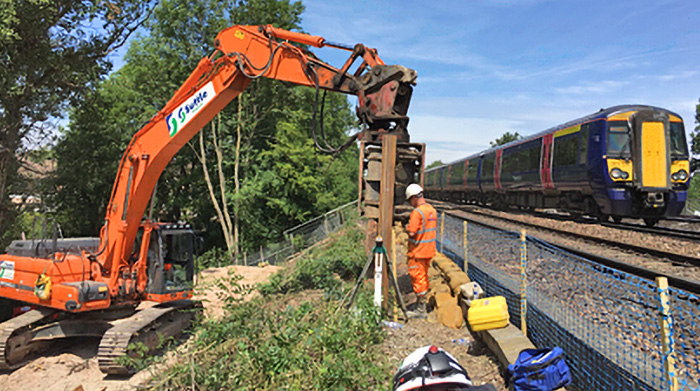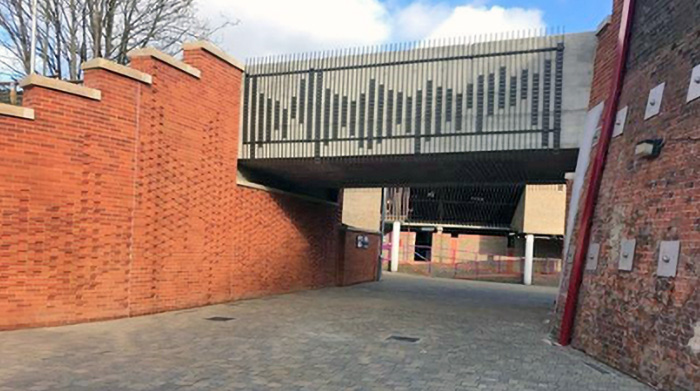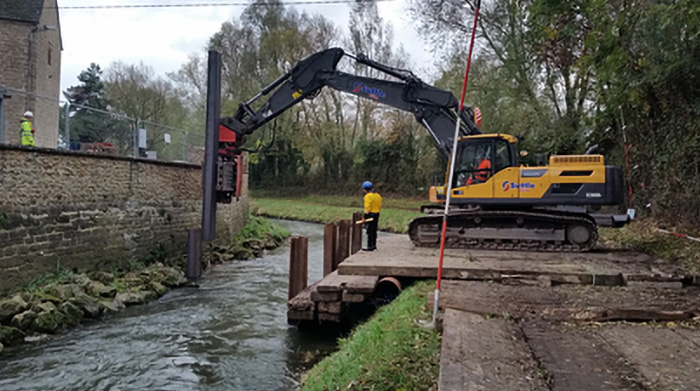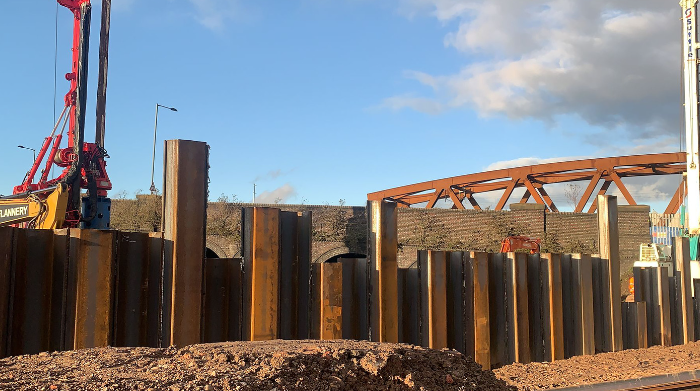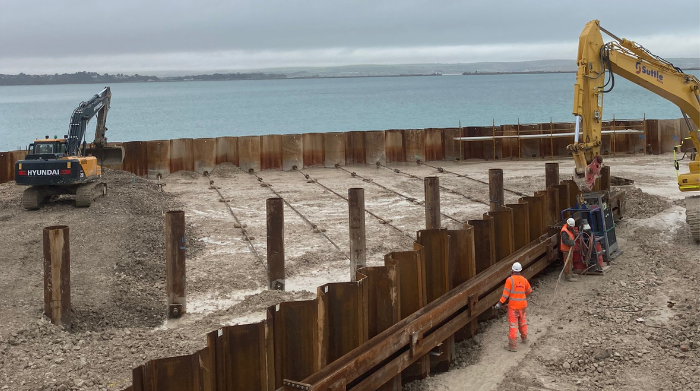Preformed steel corrugated sheets of steel with interlocking clutches are driven into the ground in units of between 0.6m width and 1.5m width and connected together to form a continuous steel embedded retaining wall.
Sheet piling is commonly used in cofferdams to enable excavations in water. Their ability to be recovered by extraction means they are suited for temporary works where the material can be reused.
When sheet piles are used in a permanent situation they can have sealant applied to the interlocks or the interlocks can be fully welded to provide a fully watertight wall.
Sheet piles can be driven into the ground using vibration, impact or pressing force:
Vibration:
Vibrators use eccentric spinning weights to produce a high-frequency vibration to transmit to the pile toe. This can liquify the ground around the toe of the pile and make it easier for the pile to penetrate the ground.
Impact:
A drop weight hammer is lifted and dropped at short intervals and to a set height to transmit energy from the pile head to the pile toe where it slices into the ground.
Pressing:
(commonly called silent piling or press-in method, and associated with equipment trade names like Giken and Tosa)
Preinstalled preceding piles are gripped by the device, and these piles provide a reaction force that allows the next pile to be pressed into the ground, using large hydraulic cylinders.
Chosen technique will depend on site logistics, ground conditions and nearby environmental factors. Noise or vibration can be reduced during installation by loosening the ground ahead of the installation, with pre-auguring of the soil. Water jetting can also be deployed to ease installation.
Suttles can install piles of up to 30m in length and up to 10Te in weight, including the full range of Larssen (U-piles), Frodingham (Z-piles), combi walls (HZ-AZ) and tubular combi walls.





